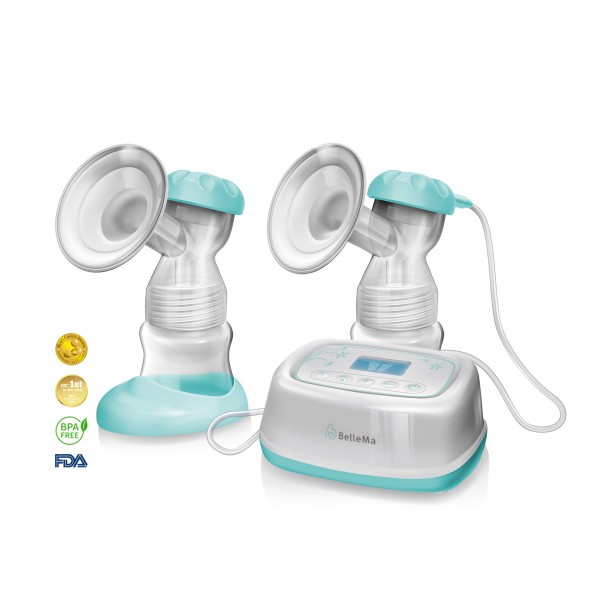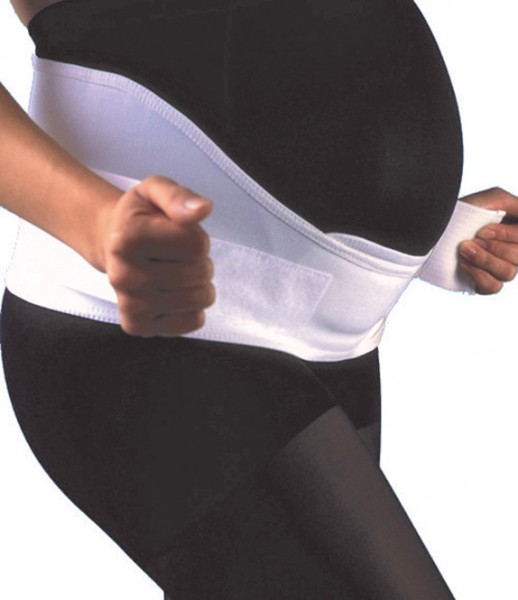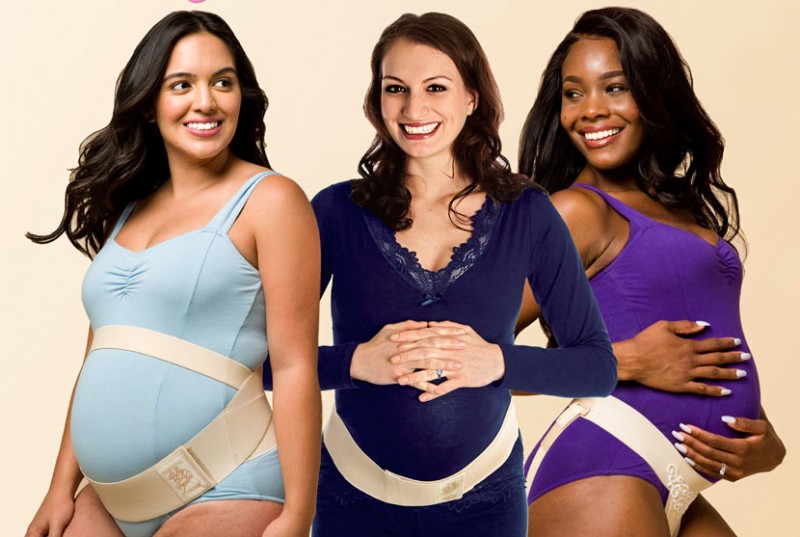BELLEMA
Mercy Barland National Sales Manager bellemausa.com
 Effective Pro
Effective ProWhat is your specialty?
BARLAND: BelleMa specializes in the development and manufacturing of breast pumps for mothers, in support of the global breastfeeding advocacy and in compliance to the WHO Code.
What conditions are best served by your products?
BARLAND: BelleMa breast pumps are recommended for mothers who are having difficulty establishing milk supply, mothers whose babies are in NICU, mothers who are having twins and mothers who are going back to work.
What strategic shifts in thinking and business management have occurred that have helped grow the business?
BARLAND: BelleMa has shifted from the traditional formal planning process to a more flexible and creative structure. Instead of relying strictly on our formal calendar of plans, we have shifted into allowing our strategies to be aligned to our distribution partners. We then can focus more on the enhancement of our product development and increasing social media attention.
How has the market for these products changed during the last three years?
BARLAND: The market opportunity for breast pumps has steadily increased for the past three years. Some of the drivers of this growth are the ongoing national breastfeeding campaigns from different organizations, the increase in the working-women population, and the need to improve nutritional levels for both infants and mothers. The ACA [Affordable Care Act], which mandates the coverage of breast pumps for health insurance plans, is also a factor that enhanced the growth in the United States. Cost reduction in some of the breast pump designs is also seen in the market because of low health plan reimbursements.
How do you differentiate your products from others in the category?
BARLAND: The Effective Pro and the Euphoria Pro models of BelleMa are designed with separate suction controls for the left and right pumps. This design enables mothers with different breast conditions to still pump simultaneously and control each pump, therefore will save a lot of pumping session time. These two models are also of a closed system design, which will not allow milk to enter the tubes or the motor.
Why should women’s products be attractive to HME providers?
BARLAND: Women, representing 50 percent of the entire population, represent an attractive market opportunity to HME providers. It is a fact that there are many conditions that affect women’s health, such as maternity, breast cancer, incontinence and COPD—to name a few, and all these make women’s health a category of its own. Women have wider range of networks among friends and relatives than men, in general, and can generate increased referral sources for the HME providers.
How can HME providers realize profitability with this category?
BARLAND: HME providers must render their due diligence in researching the market dynamics and the variety of conditions that affect women’s health in order to deliver the proper care. Having a female team will also help in being able to understand women’s needs as most women will not be comfortable discussing some of their conditions with male staff. A solid foundation of building relationships with women patients can also lead to establishing patient loyalty and can lead to long-term relationships as new health conditions with women patients evolve. What trends have you identified for women’s products? BARLAND: The two highly identified major conditions that affect women’s health are maternity and breast cancer. If HME providers follow the trend of these needs, they can be assured of being able to serve a large number of patients in the women’s health marketplace.
Tell us about a recent discovery in your area of expertise.
BARLAND: In this generation where technology dominates all industries, I realized that having a good medical device that serves the purpose of care in the health care industry is not enough. As a company with traditional marketing values and perspectives, we need to go with the flow and be proactive in our social media campaigns.
What tools do you provide to help educate dealers and potential product users?
BARLAND: We are constantly evaluating our efforts in educating dealers and mothers in regards to educational materials pertaining to our products. Aside from printed marketing materials, we provide training to our dealers as the need arises. We utilize our website as a platform for disseminating informative resources and actively engage in social media to broaden our outreach to mothers.
ITA-MED
Lev Tripolsky President and CEO gabrialla.us
 Maternity Belt (medium support)
Maternity Belt (medium support)Tell me about your company.
TRIPOLSKY: The Gabrialla women’s health line began in 1996. It is still our fastest-growing line. I started the line because my wife was pregnant and experiencing pain and swelling. She tried many different products: maternity belts, compression stockings, but she wasn’t happy, so I tried to design something myself. We went through eight or nine designs until we found one that was comfortable. The belt is nearly invisible under clothes, improves posture and prevents stretch marks. Then we developed belts for women pregnant with multiples and smaller or more petite women. Now there are light, medium and strong support belts, as well as belts for runners.
What conditions are best served by your products?
TRIPOLSKY: We have products for pregnancy, postpartum, post-C-section, post-mastectomy and post-liposuction. We are evolving and growing the brand constantly. We want to start a relationship with women at childbearing age and then continue that relationship through their entire life.
What strategic shifts in thinking and business management have occurred in your business?
TRIPOLSKY: In the last 20 years the issue of women’s health has become prevalent in the health care market. One product we designed is for posture correction, with four benefits in one product. It corrects posture and provides abdominal support. When the issue of breast cancer became prevalent, we started making post-mastectomy sleeves for anti-lymphedema support. We expanded our international sales and our e-commerce sales to compete in those markets.
How do you differentiate your products from others in the category?
TRIPOLSKY: We are an eco-friendly manufacturer, because we use angora wool and natural milk protein fibers in our products. We export to 37 countries. Last year we started exporting to China. Our products are entirely made in the United States. Our packaging is very retail oriented and completely bilingual, customized to the country we’re exporting to.
Why should women’s health products be attractive to HME providers?
TRIPOLSKY: Reimbursements have been cut continuously, and I don’t think it’s going to get any better. When there were issues with unscrupulous dealers several years ago, there was a crackdown, and many dealers went out of business. They had no idea how to market themselves. We refocused on retail and started advising dealers to focus on retail. Women are doing more buying online, but a large percentage want to come into the store and see the product in person. Also, I think women are more concerned about early prevention—take varicose veins for example. They are buying compression stockings in lighter compression weights (e.g., for trade shows or flying) at younger ages to prevent the problem from occurring.
IT’S YOU BABE
Christine Seering Manager itsyoubabe.com
 Babe Supports
Babe SupportsWhat is your specialty?
SEERING: It’s You Babe currently specializes in Made in the U.S. durable medical supplies. We made our name with state-of-the-art maternity belts, pregnancy supports, pelvic floor therapy and back braces.
What conditions are best served by your products?
SEERING: The V2 Supporter and PF Press address pelvic floor dysfunction, prolapsed bladder and uterus, and our Best Cradle, Embracing Belly Boostier and Prenatal Cradle Plus support the back and lift heavy bellies.
What strategic shifts in thinking and business management have occurred that have helped grow the business?
SEERING: The market is saturated with knockoffs; we are shifting our focus more into the health care realm. Registering It’s You Babe, LLC, as a federally recognized U.S. manufacturer of medical devices is a huge step in the right direction for us. Around 70 percent of pregnant women complain of backache. Women deal with back and hip pain from injuries sustained during pregnancy long after the babies are born. If we can play a part in preventing spine and hip pain and injury, the reduction in health care costs can be significant.
How has the market for these products changed during the last three years?
SEERING: The need for prolapse support has gained steam in the last three years due to the increase of menopausal women in the marketplace. We have designed a support to aid in the discomfort caused by prolapse as an option for women who, because of the pain and discomfort, may make a hasty decision to get mesh implant surgeries.
How do you differentiate your products from others in the category?
SEERING: Being a registered nurse has helped me formulate designs for It’s You Babe based on anatomically addressing the need for support in such a way that replacing pain with comfort is paramount.
How are you responding to the demand for value-based medical products/devices?
SEERING: We value our retailers and offer a significant profit margin on our complete line and have instituted MAP pricing on our Gold Line of Belly Boostiers and PF Press.
Why should women’s products be attractive to HME providers?
SEERING: Approximately six million women are pregnant in the U.S. each year, and over half of these women experience pain during pregnancy. A significant number are at risk for premature birth or maternal mortality. Our patented designs have been known to lengthen the gestational period. If we can support the lumbar spine, and lift weight from the pelvic cradle, we can help women remain active and comfortable even in the final days of pregnancy. One in four women will develop pelvic organ prolapse (POP) after menopause. It’s You Babe’s PF Press offers relief from some of the symptoms caused by prolapsed organs and vulvar varicosities, and can improve quality of life in these women.
How can HME providers realize profitability with this category?
SEERING: If we work together to help each other with obtaining insurance coverage, the reach to those in need of these measures will be significant.
Tell us about a recent discovery in your area of expertise.
SEERING: Prolapse is another word for hernia, and women are suffering from prolapse in large numbers. We can help these women gain some comfort and relief with our New PF (pelvic floor) Press.
How do you approach product development?
SEERING: By working with doctors, nurses, midwives and patients directly to solve problems without doing adding additional negative symptoms.
What tools do you provide to help educate dealers and potential product users?
SEERING: We have free marketing material always available to help educators and dealers to promote our products. We also promote social media, videos and a variety of advertisements.
